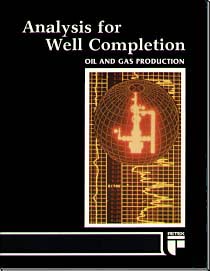Analysis for Well Completion

This is part of the Oil and Gas Production Series
Once a well has been drilled to total depth, it must be decided whether it can be made to produce oil and gas in profitable amounts. Perhaps only one out of six wells drilled can ever produce enough petroleum to recover costs and offer a profit. Even then, that one well must be completed properly. Recompletion costs are high, and a bad completion may ruin a well. Completion must be done right the first time.
To plan the best well completion, geologists and engineers must use a variety of techniques to gather large amounts of data on a reservoir and its fluids. A good completion plan also requires information on how a reservoir and its fluids may change over time. Engineers analyze the data carefully to predict how a well will produce throughout its life and what can be done to maximize production and minimize cost.
The purpose of this training manual is to survey standard analysis of several types of oilfield data that affect well completion. It describes the characteristics of reservoirs and their fluids, explains methods for gathering data on those characteristics, and discusses ways in which those data are interpreted. The person who reads this book and completes the included self-tests will learn about several types of oilfield data and gain a basic understanding of how those data are gathered and analyzed. 1984, 108 pp. ISBN 0-88698-084-4.
| Format | Price | Catalog No. | |
|---|---|---|---|
| Print Only | $8.00 | 3.31110 |





